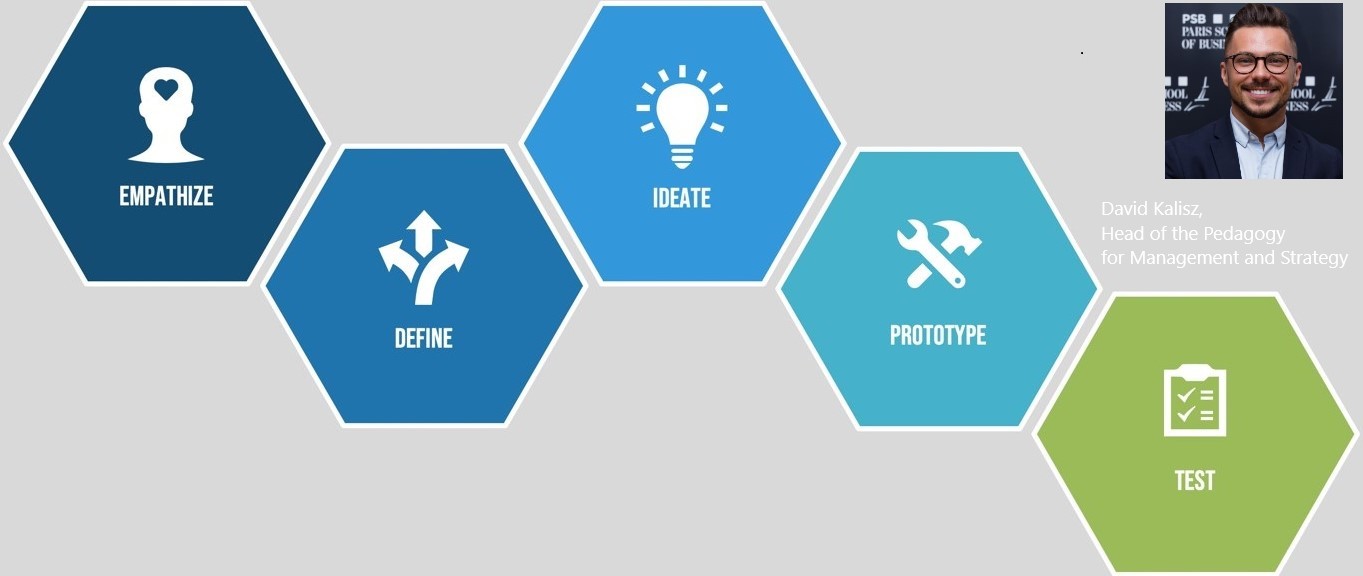Research for Practice – Design Thinking
By David E. Kalisz, PhD, Associate Professor, PSB Paris School of Business
You think that you don't have enough resources, skills to do something?
They say that there no budget for investments in innovation? You are afraid how people will react to your ideas? You believe that brain storming is the most effective way to solve issues? Forget about traditional it! Design Thinking is the new-old thing.
„Innovation distinguishes between a leader and a follower.”
— Steve Jobs
Can you imagine world without…?
Everybody knows Apple multinational technology company and almost everybody has used products of 3M corporation operating in the fields of consumer goods, industry and health care – they were on the brick of failure – thanks to adopting new, innovative culture of design thinking that has changed them they became market leaders.
In 2017 3M made to the 97th place in the 2018 Fortune 500 list of largest United States corporations with total sales over 31,7 billion dollars and Apple leads the path of innovative products in consumer electronics and takes the 4th place at a global list with 265 billion dollars of revenue worldwide.
They probably exist only thanks to Design Thinking, they proceed to adopt an innovative organizational culture through design thinking to achieve astonishing, amazing records of success.
Companies need to constantly innovate or make a place of others and die.
Today's consumer is more connected than ever before, aware and spoiled of choice…
Design thinking allows them to create innovation and explore opportunities, based on understanding of the situation and unmet consumer needs.
Why we need it?
Ever since since stone age, since we figured out fire, created stone tools, started to communicate and create languages and the other superb innovations of early humankind, change has been upon us. This is evolution, but look now, how change today is faster than it has ever been before.
Time is not been kind to slow adapting businesses, that are used to operate by the rules of “the old model”.
Clients want more, when they want it, how they want it, and at the price they want.
In the past we’ve expected from management to set of bussiness needs: that repetitive task will be completed, economic efficiency will be improved, and finally labor and machine productivity will be maximized. Now those needs are extremely different.
What is Design Thinking?
„Design thinking is a human-centered approach to innovation that draws from the designer’s toolkit to integrate the needs of people, the possibilities of technology, and the requirements for business success.”
—Tim Brown, President & CEO of IDEO”
There is no “one best way” to work with Design Thinking process. There are many guidelines and success stories behind them. For certain we can speak about useful stating points and landmarks that should be followed as a system of overlapping spaces, but not as a sequence of orderly steps.
We can use them as inspiration, the problem or opportunity that motivates the search for solutions.
5 Landmarks of Design Thinking
Stage 1: Immerse yourself in the context that the project is part of and identify possible opportunities. Get to know the users and their needs.
Stage 2: Explore potential solutions to meet a designed need. Explores as many possible before evaluating which might provide a good direction forward for the project. This stage is called Ideation.
Stage 3: Flesh out different ideas and start to develop them into proper concepts.
Stage 4: Make the concept as real and alive as possible by creating prototype.
Stage 5: Do presentation that involves identifying how to sell your concept and how you could easily present it to an audience.
Département de recherche:



